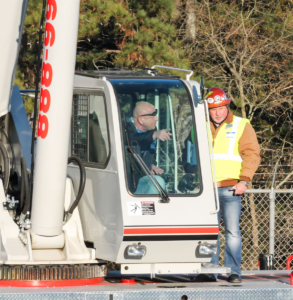OSHA Puts Onus on Employers to make sure Operators Can Recognize and Avert Risk

The final rule for crane operator certification requirements makes permanent the employer duty to ensure that operators are competent to operate equipment safely. The positive impact of this is that employers will begin to see who is best qualified for which machines and work; who is capable to operate that crane independently, which will make jobsites safer and more productive. Employers will be well positioned to use that info to their advantage because they can assign people to the jobs they’re most qualified for and make decisions based on solid evaluation records.
For example, if a person is supposed to work on a highway job placing a mile of concrete barriers a day, but productivity falls behind, information from an evaluation may shed light on why. Delays could be due to weather or non-delivery of necessary materials, or the person assigned to the work is not the best for that particular job.That information will make training and re-training more efficient as well.
How to Evaluate
OSHA’s FAQ states: “Through an evaluation, the employer must ensure that each operator is qualified by a demonstration of . . . skills and knowledge, as well as the ability to recognize and avert risk, necessary to operate the equipment safely . . .”
OK, what can or should employers, and site owners who can bear responsibility for crane and operator rentals, do? CIS recommends these steps:
1. Recognizing and adverting risk requires daily, ongoing hazard analysis. Lifts have to be planned. Plans have to evaluated based on changes and unanticipated scenarios that occur. One day the risks maybe lightening. Another day the risk may be material delays putting pressure on the schedule, proximity to energized lines. Operators need to be trained to identify, communicate and make lift/no lift decisions based on current job hazard analysis (JHAs).Certify operators or designate as trainees, and supervise accordingly.
2. In addition to certification, evaluate each operator’s qualifications on each crane he or she operates. If multiple cranes are used and the machines are the same make, model number and are configured alike, one qualification evaluation will suffice.
3. If the employer has multiple cranes made by different manufacturers, or uses cranes in different configurations, evaluate each operator on the different machines or configurations.
4. Use an in-house or third party evaluator that is qualified to evaluate based on the evaluator experience, knowledge, training and credentials.
5. At a minimum, evaluate to the sample checklist posted on the OSHA website. Add machine and work specific details. Observe performance. Ask verbal questions.
6. Document the evaluations. Use a system to retain and provides easy access to evaluations. Provide documentation to site supervisors or owners.
7. Keep evaluations records current.
Good news. Once operators pass an evaluation on one piece of equipment, the employer may allow that operator to operate different equipment without further evaluation if the employer can demonstrate that operating that equipment would not require substantially different skills, knowledge or ability to recognize and avert risk.
There is more good news. Operator evaluations are not just a compliance checkmark. When conducted correctly, they provide useful information for
getting jobs done right. The point is to verify and satisfy the questions that certifications alone cannot – is this operator qualified for this machine and this work. Those answers can save machines, materials, and most importantly, lives.
